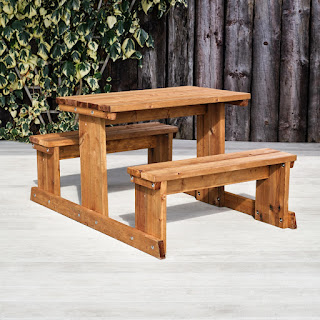Woodworking for Beginners: Start with These Simple Plans
Embarking on a woodworking journey can be both exhilarating and daunting. The sheer variety of tools, techniques, and potential projects can feel overwhelming for newcomers. However, with careful planning and a focus on foundational skills, even the most apprehensive beginner can create beautiful and functional pieces. This guide provides a structured approach, outlining simple woodworking plans perfect for novices, while emphasizing safety and best practices throughout the process.
Choosing Your First Project: A Foundation for Success
Selecting the right initial project is crucial for a positive learning experience. Avoid overly ambitious undertakings that might lead to frustration and discouragement. Instead, opt for projects that are relatively straightforward, requiring minimal tools and techniques. These initial projects should serve as a springboard, allowing you to develop fundamental skills and build confidence before moving on to more complex endeavors.
Essential Considerations When Selecting a Project:
- Simplicity of Design: Choose projects with uncomplicated designs, minimizing intricate joints and complex cuts.
- Limited Tool Requirements: Select projects that utilize readily available and easy-to-manage tools, reducing the initial investment and complexity.
- Clear Instructions: Opt for projects with clear, concise, and well-illustrated instructions, ensuring a smooth and understandable process.
- Manageable Time Commitment: Begin with projects that can be completed within a reasonable timeframe, preventing the project from becoming overwhelming.
- Accessible Materials: Choose projects that utilize readily available and affordable materials, reducing the overall cost and logistical challenges.
Project 1: A Simple Wooden Coasters Set
This project is ideal for absolute beginners, requiring minimal tools and skills. It focuses on basic cutting, sanding, and finishing techniques, providing a solid foundation for more advanced projects.
Materials Required:
- Four pieces of hardwood (e.g., maple, cherry, or walnut), approximately 4 inches square and ½ inch thick
- Sandpaper (various grits, from coarse to fine)
- Wood finish (e.g., polyurethane, varnish, or oil)
- Measuring tape
- Pencil
- Hand saw or circular saw (with appropriate safety gear)
- Safety glasses
Instructions:
- Cut the wood: Using a saw, carefully cut the four pieces of hardwood to the desired dimensions (4 inches square).
- Sand the edges: Sand all edges and surfaces of the wood pieces, starting with coarser grit sandpaper and gradually moving to finer grits to achieve a smooth finish.
- Apply the finish: Apply a thin, even coat of wood finish according to the manufacturer's instructions. Allow sufficient drying time between coats (usually 24 hours). Apply multiple coats for a durable and aesthetically pleasing finish.
- Inspect and enjoy: Once the finish is completely dry, inspect your coasters for any imperfections. If necessary, lightly sand and reapply the finish. Enjoy your handmade coaster set!
Project 2: A Basic Wooden Shelf
This project introduces the concept of joining wood pieces, requiring slightly more advanced techniques than the coaster set. It provides valuable experience in using wood glue and screws, essential skills for numerous woodworking projects.
Materials Required:
- Two pieces of lumber for the shelf supports (e.g., 1x6 pine, approximately 12 inches long)
- One piece of lumber for the shelf (e.g., 1x12 pine, approximately 12 inches long)
- Wood glue
- Wood screws (appropriate size and length)
- Screwdriver
- Drill (optional, but recommended for easier screw insertion)
- Measuring tape
- Pencil
- Sandpaper
- Wood finish (optional)
Instructions:
- Prepare the wood: Sand all pieces of lumber to achieve a smooth surface. Measure and mark the locations for the shelf supports on the shelf board.
- Apply glue: Apply a generous amount of wood glue to the contact surfaces of the shelf supports and the shelf board.
- Attach supports: Carefully align the shelf supports with the marked locations and firmly clamp them in place. Ensure that the supports are flush with the edge of the shelf board.
- Secure with screws: Pre-drill pilot holes (if using a drill) and screw the supports securely to the shelf board using wood screws. Ensure that the screws are driven straight and do not over-tighten.
- Finish (optional): Sand any rough edges or excess glue. Apply a wood finish to protect and enhance the appearance of the shelf, if desired.
- Installation: Attach the finished shelf to the wall using appropriate wall anchors and screws.
Safety First: Essential Precautions for Woodworking Beginners
Safety should always be the paramount concern when engaging in woodworking. Improper techniques and a lack of safety precautions can lead to serious injuries. The following precautions are essential for beginners:
Essential Safety Measures:
- Always wear safety glasses: Protecting your eyes from flying debris is crucial.
- Use appropriate hearing protection: Loud power tools can cause permanent hearing damage.
- Maintain a clean and organized workspace: A cluttered workspace increases the risk of accidents.
- Use sharp tools: Dull tools require more force, increasing the likelihood of injury.
- Never operate power tools while fatigued or under the influence of drugs or alcohol: This significantly impairs judgment and coordination.
- Always unplug power tools before making adjustments or cleaning: This prevents accidental activation.
- Follow the manufacturer's instructions for all tools and equipment: This ensures proper and safe operation.
By starting with simple projects and prioritizing safety, beginners can gain confidence and skill in woodworking, laying a solid foundation for more ambitious projects in the future. Remember that patience and persistence are key to success in this rewarding craft. With practice and dedication, you will find yourself creating beautiful and functional pieces that you will cherish for years to come.


















